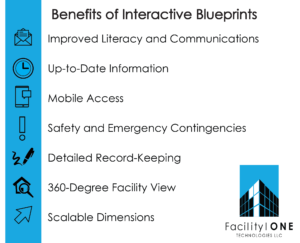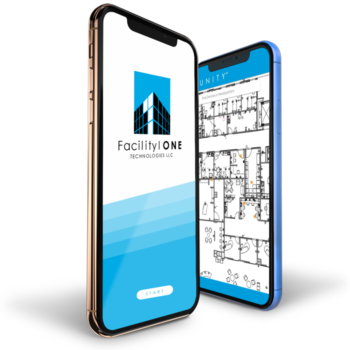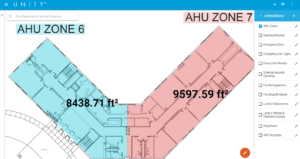Benefits of Interactive Blueprints in CMMS
 Almost every job site has encountered it — you’re chugging along, everything is working fine, and suddenly you realize something seems…off. Why isn’t this electrical panel in the right place? Is that corner crooked? What is this HVAC vent doing here?
Almost every job site has encountered it — you’re chugging along, everything is working fine, and suddenly you realize something seems…off. Why isn’t this electrical panel in the right place? Is that corner crooked? What is this HVAC vent doing here?
Many of these building issues stem from the blueprints. A blueprint is definitionally a two-dimensional drawing that contains the details for a given construction project. Whether the original architect made a mistake, the building process forced unforeseen changes, or the various trades ran into issues, it happens frequently and is incredibly frustrating. Some common problems people run into with blueprints are:
- Old Prints:
Often subcontractors are working from an old set of blueprints that may not reflect changes made by trades-workers, last-minute alterations, mistakes that are now permanent, etc. - Unusual Dimensions:
There is no fully accepted industry standard for blueprint dimensions, so it’s vital for every worker on the site to identify the scale and become familiar with the blueprint dimensions to properly complete work. - Symbol and Abbreviation Illiteracy:
While an architect may be fluent in the many symbols and abbreviations used on blueprints, not every tradesman will be. This can result in cluttered keys or confusion, neither of which are beneficial to the process of building your project. - Inaccessibility:
The foreman may have access to the blueprints at all times, but what about the electricians, concrete layers, HVAC, plumbers? What about the huge range of people who will use the building after it’s been built? Paper blueprints are very inconvenient, and lack of access to them can result in costly mistakes, confusion, and even safety issues like being unable to identify fire exits or water shutoffs.
These are just a few common issues — there are many, many more that arise from the use of paper blueprints. Luckily, it doesn’t have to be this way. Computerized maintenance management systems (CMMS) are bringing interactive digital blueprints to use for foreman and site managers everywhere. Here’s what to expect from a platform like FacilityONE’s SMARTPRINT® blueprints:
- Mobile Access:
Users can view digital blueprints from any device, making them accessible to everyone from the architect to engineers to foremen to individual workers. This access can not only empower your workers to be self-sufficient but also promotes efficient use of time and streamlines workflows. It has benefits for post-construction too — inspections, pest control, emergency response and many other situations can be made easier and smoother when there are blueprints conveniently available.
engineers to foremen to individual workers. This access can not only empower your workers to be self-sufficient but also promotes efficient use of time and streamlines workflows. It has benefits for post-construction too — inspections, pest control, emergency response and many other situations can be made easier and smoother when there are blueprints conveniently available. - Safety and Emergency Contingencies:
This offers information on critical details that can be used in emergency response situations like flooding, fire and more. Remote users can locate shut-offs, identify electrical connectivity and pinpoint safety systems quickly, saving precious time in an emergency situation. - Detailed Record-Keeping:
Digital blueprints and asset mapping allow users to attach photographs, make real-time changes, annotate floor plans, make asset profiles and record a range of information within those profiles for easy access. Organized record-keeping not only saves time and efficiency, it can also provide a defense against audits or legal action. - 360 Degree View of Facility:
This benefit can be taken both literally and figuratively. Digital blueprints let users generate multi-dimensional models of the rooms and interact with plans in a whole new way. The less literal interpretation is the deeper insight and familiarity digital blueprints provide users into the layout and inner workings of their structure.  Scalable Dimensions:
Scalable Dimensions:
Did the architect use a strange scale that’s difficult and time-consuming for workers to convert into something they can work with? Digital blueprints offer interactive scaling that let users maintain scales and zoom in or out of diagrams to get on a more convenient common ground. This saves time and prevents mistakes caused by frequent conversion.
Digital blueprints are the future’s answer to problems as old as construction, and they are becoming more and more prevalent across the industry. Contact us today to learn about our unique SMARTPRINT® interactive and interconnected digital blueprints.
